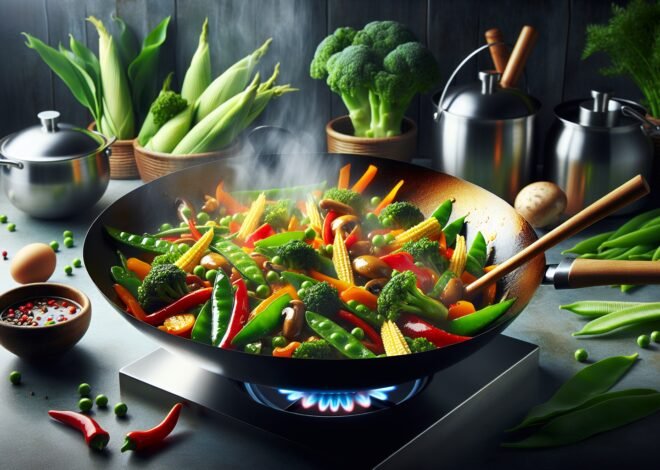
How to Make a Classic Tomato Sauce from Scratch
Make tomato sauce to elevate any meal with layers of rich flavors derived from just a few ingredients. Did you know that homemade tomato sauce can enhance the natural taste of tomatoes while preserving essential nutrients? This post will guide you through crafting classic tomato sauce from scratch, where you will learn about selecting fresh tomatoes, the ideal balance of herbs, and secrets to achieving the perfect texture. Dive in to discover techniques that capture authentic flavors, turning simple dishes into unforgettable culinary experiences. Enjoy the satisfaction of making a sauce that connects you to traditional cooking roots and brings your favorite dishes to life.
The Ultimate Guide to Homemade Tomato Sauce
Creating homemade tomato sauce is an art that involves choosing the right ingredients, understanding cooking techniques, and knowing how to store and serve your creation. This guide will help you master every step, from selecting tomatoes to pairing your sauce with mouthwatering recipes. Dive into the world of rich flavors and learn how to craft a sauce that enhances any dish.
Selecting the Best Tomatoes for Sauce
The foundation of any great tomato sauce is the tomatoes themselves. Choosing the right type ensures a flavorful and thick sauce. Opt for plum tomatoes like San Marzano, which are known for their dense flesh and low water content. These tomatoes yield a hearty sauce that clings well to pasta.
Consider the following tips when selecting tomatoes:
- Freshness: Look for tomatoes that are firm yet slightly yielding to touch, with vibrant red skin.
- Seasonal Choices: Buy locally grown, in-season tomatoes for the best flavor.
- Variety: Try Roma or Amish Paste tomatoes as alternatives to San Marzano.
Incorporating a mix of tomato varieties can also add complexity to your sauce. Balance the sweetness of some with the acidity of others for a well-rounded taste.
Essential Ingredients for a Rich Tomato Sauce
Crafting a rich tomato sauce involves more than just tomatoes. The right combination of ingredients enhances depth and flavor. Here are essential ingredients to consider:
- Onion: Adds sweetness and depth. Opt for yellow onions for a milder flavor.
- Garlic: Essential for aromatic notes. Use fresh garlic cloves for the best aroma.
- Olive Oil: Provides a smooth texture and subtle richness.
- Herbs: Fresh basil and oregano are classics. Add dried thyme for earthiness.
- Salt and Pepper: Essential for seasoning and balancing flavors.
For a bolder taste, consider adding red pepper flakes for heat or a splash of red wine for sophistication. These ingredients work in harmony to create a sauce with layers of flavor.
Tools and Equipment Needed for Sauce Preparation
The right tools make sauce preparation efficient and enjoyable. Equip your kitchen with these essentials:
- Heavy-bottomed Pot: Ideal for slow cooking and even heat distribution.
- Blender or Food Mill: For achieving a smooth consistency.
- Sharp Knife: Essential for chopping ingredients finely.
- Cutting Board: A stable surface for preparing ingredients.
- Wooden Spoon: Perfect for stirring and scraping the pot.
Having these tools on hand streamlines the cooking process and helps you achieve a perfect homemade sauce every time.
Step-by-Step Instructions for Making Classic Tomato Sauce
Creating a classic tomato sauce is a rewarding process. Follow these step-by-step instructions to ensure a rich and flavorful outcome. Each stage builds on the last, enhancing the sauce’s taste and texture.
Preparing Tomatoes for Cooking
Before cooking, tomatoes need proper preparation. Start by washing them thoroughly under cold water. Remove any stems and blemishes. Blanching tomatoes helps in peeling them easily:
- Bring a pot of water to a boil.
- Score a small X on the bottom of each tomato.
- Immerse tomatoes in boiling water for 30 seconds.
- Transfer them to an ice bath to cool.
- Peel off the skin, starting at the scored area.
Once peeled, remove the seeds for a smoother sauce. Cut tomatoes into quarters and remove seeds using a spoon. This step reduces bitterness and improves the sauce’s consistency.
Cooking Techniques for Perfect Tomato Sauce
Cooking transforms raw ingredients into a cohesive sauce. Start by heating olive oil in a heavy-bottomed pot over medium heat. Add chopped onions and sauté until translucent. Stir in minced garlic and cook until fragrant.
Add prepared tomatoes to the pot, along with salt and pepper. Stir to combine and bring the mixture to a simmer. Let it cook uncovered for 45 minutes, stirring occasionally. This reduces the sauce and concentrates its flavors.
For a smoother texture, use a blender or food mill after cooking. Blend the sauce in batches, ensuring consistency. Adjust seasoning as needed, adding herbs like basil and oregano towards the end of cooking.
Tips for Achieving the Right Consistency in Your Sauce
Consistency is crucial for a sauce that coats pasta well. If the sauce is too thin, continue simmering until it thickens. Avoid rushing this process, as slow cooking develops richer flavors.
If the sauce becomes too thick, add a bit of reserved tomato juice or water. Stir in small amounts until the desired consistency is reached. This technique ensures a perfect balance between thickness and flavor.
To finish, taste and adjust seasoning. A splash of balsamic vinegar can enhance flavors if needed. Achieving the right consistency elevates your homemade sauce from good to exceptional.
Storing and Serving Your Homemade Tomato Sauce
Once you’ve crafted your tomato sauce, proper storage and creative serving ideas will prolong its enjoyment. Preserve the sauce’s fresh taste and explore new ways to incorporate it into meals. These strategies ensure your efforts in the kitchen are appreciated long after the sauce is made.
Proper Storage Methods for Long-Lasting Flavor
Storing your sauce correctly is essential to maintain its flavor. Allow the sauce to cool to room temperature before transferring it to airtight containers. This prevents condensation and freezer burn.
- Refrigeration: Store in the fridge for up to one week. Use glass jars for easy access.
- Freezing: Freeze in portion-sized containers for up to three months. Label with dates for freshness.
- Vacuum Sealing: An option for preserving large batches with minimal freezer space.
Proper storage ensures your sauce stays delicious and ready for any culinary inspiration.
Creative Ways to Serve Tomato Sauce
Tomato sauce is versatile beyond pasta. Use it as a base for soups, a topping for pizzas, or a dip for breadsticks. Here are a few creative ideas:
- Shakshuka: Poach eggs in sauce for a savory breakfast.
- Meatball Subs: Add to sandwiches for a juicy flavor boost.
- Stuffed Peppers: Mix with rice and fill bell peppers for a hearty meal.
These options showcase the sauce’s adaptability, transforming simple dishes into flavorful experiences.
Pairing Tomato Sauce with Delicious Recipes
Pair your sauce with recipes that complement its flavors. Classic pairings include spaghetti or lasagna. Explore these ideas for variety:
- Eggplant Parmesan: Layer sauce with eggplant and cheese for a vegetarian delight.
- Grilled Chicken: Top chicken with sauce and mozzarella for a quick, Italian-inspired meal.
- Risotto: Stir into creamy risotto for a tomato-infused twist.
These pairings enhance the flavor profile, making your homemade tomato sauce the star of any meal.
Conclusion
To make tomato sauce, first sauté onions and garlic in olive oil until soft. Add crushed tomatoes, salt, and pepper, then let the mixture simmer for 20 to 30 minutes. Stir in herbs like basil or oregano for added flavor. Adjust seasoning to taste, allowing the sauce to thicken as needed. Serve the sauce over pasta or use it as a base for other dishes.
FAQ
What are the essential ingredients for homemade tomato sauce?
Key ingredients include ripe tomatoes, garlic, onion, olive oil, salt, and fresh basil. These basics create a flavorful base. Additional spices like oregano or red pepper flakes can enhance taste.
How can I thicken my tomato sauce without altering the flavor?
Simmer the sauce uncovered to naturally reduce and thicken. For quicker results, add a small amount of tomato paste. Alternatively, a cornstarch slurry can be used, but add sparingly to maintain flavor.
What is the best type of tomato to use for making tomato sauce?
Roma tomatoes are ideal due to their low moisture content and rich flavor. San Marzano tomatoes offer an authentic taste, perfect for a traditional sauce. Heirloom varieties also provide unique flavors.
Can I freeze homemade tomato sauce without losing its quality?
Yes, freeze the sauce in airtight containers or freezer bags. Label with the date for easy tracking. It maintains quality for up to six months. Thaw in the refrigerator before reheating for best results.
How long do I need to simmer tomato sauce for the best taste?
Simmer for at least 30 minutes to meld flavors. For a richer taste, extend to an hour or more. Stir occasionally to prevent sticking and adjust seasoning as needed during cooking.
Are there any tips for reducing acidity in tomato sauce?
Adding a pinch of sugar can balance acidity. Alternatively, incorporate a grated carrot or a splash of cream for a smoother taste. Baking soda in small amounts also neutralizes acidity effectively.











